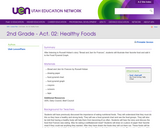
After listening to Russell Hoban's story "Bread and Jam for Frances", students will illustrate their favorite food and add it to the Food Pyramid Graph.
- Subject:
- Life Science
- Nutrition
- Material Type:
- Activity/Lab
- Date Added:
- 08/05/2020

After listening to Russell Hoban's story "Bread and Jam for Frances", students will illustrate their favorite food and add it to the Food Pyramid Graph.

The purpose of this video lesson is to expand the student's knowledge about enzymes by introducing the antioxidant enzymes that are intimately involved in the prevention of cellular damage and eventual slowing of the aging process and prevention of several diseases. Students will learn that natural antioxidant enzymes are manufactured in the body and provide an important defense against free radicals. The topic of free radical action is introduced, covering how they are constantly generated in living cells both by ''accidents of chemistry'' and also by specific metabolic processes.
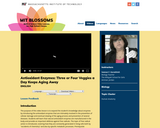
The purpose of this video lesson is to expand the student's knowledge about enzymes by introducing the antioxidant enzymes that are intimately involved in the prevention of cellular damage and eventual slowing of the aging process and prevention of several diseases. Students will learn that natural antioxidant enzymes are manufactured in the body and provide an important defense against free radicals. The topic of free radical action is introduced, covering how they are constantly generated in living cells both by ''accidents of chemistry'' and also by specific metabolic processes.
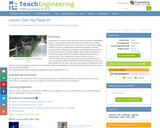
Few people are aware of how crucial the sense of smell is to identifying foods, or the adaptive value of being able to identify a food as being familiar and therefore safe to eat. In this lesson and activity, students conduct an experiment to determine whether or not the sense of smell is important to being able to recognize foods by taste. The teacher leads a discussion that allows students to explore why it might be adaptive for humans and other animals to be able to identify nutritious versus noxious foods. This is followed by a demonstration in which a volunteer tastes and identifies a familiar food, and then attempts to taste and identify a different familiar food while holding his or her nose and closing his or her eyes. Then, the class develops a hypothesis and a means to obtain quantitative results for an experiment to determine whether students can identify foods when the sense of smell has been eliminated.
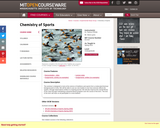
This seminar will focus on three sports: swimming, cycling and running. There will be two components to the seminar: classroom sessions and a "laboratory" in the form of a structured training program. The classroom component will introduce the students to the chemistry of their own biological system. With swimming, running and cycling as sample sports, students are encouraged to apply their knowledge to complete a triathlon shortly after the term.
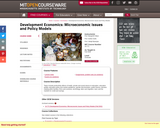
" Topics include productivity effects of health, private and social returns to education, education quality, education policy and market equilibrium, gender discrimination, public finance, decision making within families, firms and contracts, technology, labor and migration, land, and the markets for credit and savings."
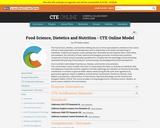
The Food Science, Dietetics, and Nutrition Pathway focuses on three specializations centered on the science of food in food prepartation and development and its relationship to the health and well-being of individuals. Students pursuing this career pathway learn observational and analytical skills in food safety and sanitation; the chemistry of food; chemical and biological processes; functional and nutritional components of food; sensory evaluation; guidelines for a healthy diet; the psychology of food and eating; specialized diet planning; food production and processing; and packaging and product development.
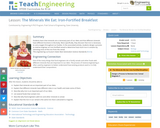
In this lesson, students will learn that minerals are a necessary part of our diet. They will learn that different minerals have different functions in the body. More specifically, they will discover that iron is necessary to carry oxygen around the body. In the associated activity, students will design a process that removes the most iron from the cereal.
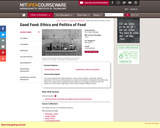
This course explores the values (aesthetic, moral, cultural, religious, prudential, political) expressed in the choices of food people eat. It analyzes the decisions individuals make about what to eat, how society should manage food production and consumption collectively, and how reflection on food choices might help resolve conflicts between different values.
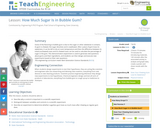
Most of the flavoring in gum is due to the sugar or other sweetener it contains. As gum is chewed, the sugar dissolves and is swallowed. After a piece of gum loses its flavor, it can be left to dry at room temperature and then the difference between its initial (unchewed) mass and its chewed mass can be used to calculate the percentage of sugar in the gum. This demonstration experiment is used to generate new questions about gums and their ingredients, and students can then design and execute new experiments based on their own questions.
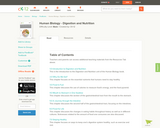
The Digestion and Nutrition Student Edition book is one of ten volumes making up the Human Biology curriculum, an interdisciplinary and inquiry-based approach to the study of life science.
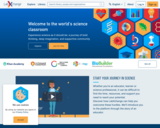
LabXchange is an online community for learning, sharing, and collaboration.
Labs are places of exploration and discovery for every field imaginable. In this spirit, you can discover, engage, and share what you learn on LabXchange. We curate and create world-class digital content, delivered on a free, online platform that lets you integrate your learning and research experiences. Here, you take control of your learning and solve real-world problems as a community. Participation will always be free.
For information about upcoming professional development workshops, visit our blog!
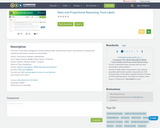
In this lesson designed to enhance literacy skills, students learn how to use fractions to interpret the nutritional information contained on food labels.
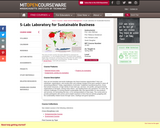
How can we translate real-world challenges into future business opportunities? How can individuals, organizations, and society learn and undergo change at the pace needed to stave off worsening problems? Today, organizations of all kinds--traditional manufacturing firms, those that extract resources, a huge variety of new start-ups, services, non-profits, and governmental organizations of all types, among many others--are tackling these very questions. For some, the massive challenges of moving towards sustainability offer real opportunities for new products and services, for reinventing old ones, or for solving problems in new ways. The course aims to provide participants with access and in-depth exposure to firms that are actively grappling with the sustainability-related issues through cases, readings and guest speakers.
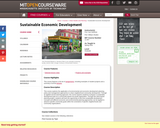
This course explores the application of environmental and economic development planning, policy and management approaches to urban neighborhood community development. Through an applied service learning approach, the course requires students to prepare a sustainable development plan for a community-based non-profit organization. Through this client-based planning project, students will have the opportunity to test how sustainable development concepts and different economic and environmental planning approaches can be applied to advance specific community goals within the constraints of specific neighborhoods and community organizations.
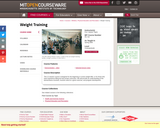
This 12 session course is designed for the beginning or novice weight lifter, or for those who have experience lifting but lack proper instruction. We will provide an understanding of the biomechanics involved, muscles used for a given exercise, and program development.
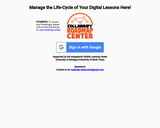
This is a tutorial about germs and how to wash your hands for k-2.